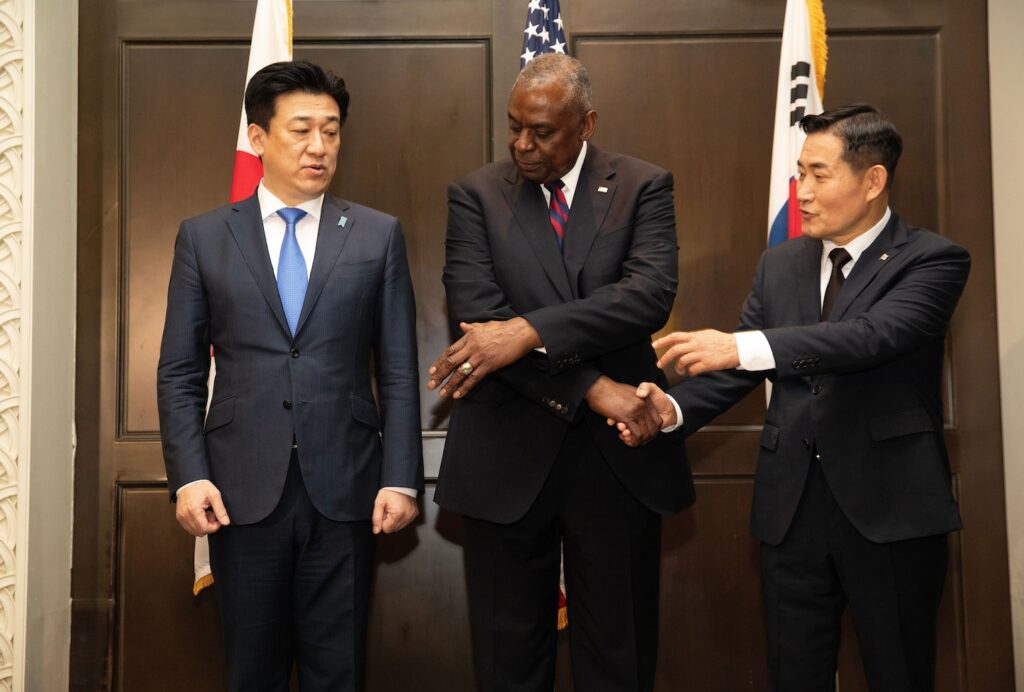Robert D. Blackwill is the Henry A. Kissinger Senior Fellow at the Council on Foreign Relations. Richard Fontaine is CEO of the Center for a New American Security. They are co-authors of “The Lost Decade: The U.S. Return to Asia and the Rise of China.”
In 2011, President Barack Obama announced that after centuries of preoccupations with Europe and decades of war in the Middle East, the United States would make the Asia-Pacific a top priority. Washington would beef up its military presence in the region, step up diplomacy, secure trade deals across the region, and more.
The pivot, or rebalance, to Asia quickly gained support among policymakers in both parties and successive administrations. It combined sound strategic logic with a keen awareness of a changing world. By engaging more deeply in the region, the United States could better realize its economic ambitions and deal more effectively with a rising China.
This is easier said than done. The United States established new basing and relocation arrangements in the Asia-Pacific region, invested in new systems and research and development, and forged new defense relationships, all for the better. But in 2022, Washington had more troops stationed in Europe than it had in 2011. Advanced systems were routinely deployed to the Middle East rather than Asia. And during this period, China's military power grew at an alarming rate. The result was a dramatic shift in the Asia-Pacific military balance away from the United States and its allies.
Meanwhile, China stepped up diplomacy, forged new partnerships, and strengthened its global engagement as U.S. attention was distracted by events and the personal preferences of policymakers. Once a central economic initiative, the Trans-Pacific Partnership, a 12-nation trade pact, was derailed by domestic political opposition. After President Donald Trump withdrew from the TPP, China became the largest trading partner for nearly every country in the region.
The result, through the Obama and Trump administrations, was a lost decade in responding to China's rise. Even if this shift had been carried out as intended, the United States would still face a significant challenge from China today, but it would be much better prepared to confront it.
What to do now? China’s unique combination of power and determination to upend the world order presents a generational challenge for U.S. policymakers. Managing U.S. vital interests across multiple regions is complex but not impossible. But the thinking behind this shift—harnessing Asia’s dynamism and countering Chinese power while protecting U.S. vital interests in other regions—should be central to U.S. grand strategy for decades to come.
The Biden administration has taken several steps in the right direction: It has revived the four-nation grouping (Japan, Australia, India and the United States) known as the “Quad,” gained new access for U.S. troops to the Philippines and Papua New Guinea, expanded the U.S. presence in Australia, strengthened diplomacy with India, the Pacific islands and Southeast Asia, and strengthened the alliance with Japan.
But Biden's moves are at best a start. The White House has not offered any serious economic incentives to Asia, and new trade deals remain off the table. Regional disparities persist; for example, less than 9 percent of the $95 billion allocated in the recent supplemental security appropriations bill was dedicated to Asia-Pacific security. Doubts about U.S. staying power are widespread across Asia, especially with a possible presidential transition looming.
A few steps would move Washington in the right direction.
First, we should increase the defense budget and make more resources available to all regions. U.S. defense spending is less than 3% of gross domestic product, nearing its lowest level since the late 1990s. Maintaining support for Ukraine is important, but stronger European allies should allow U.S. air and naval assets to be redeployed to Asia. The U.S. could do the same in the Middle East, sending more troops only for critical operations like the Israel-Gaza conflict. In both of these regions, solid U.S. diplomacy will ensure U.S. influence, rather than the number of troops or weapons on the ground.
Second, Washington should revive its stagnant economic policies in Asia, and joining the Comprehensive and Progressive Agreement for Trans-Pacific Partnership would expand U.S. access to regional markets and vice versa. Washington should first pursue bilateral digital trade agreements with Japan, South Korea, and Singapore, or, better yet, pursue a regional digital agreement. The United States should also increase its foreign aid and development assistance allocations to the Asia-Pacific region, which currently receives only a small percentage of them.
Finally, Washington should more strongly counter Beijing's authoritarian worldview. Congress should support democracies and fund programs that help like-minded countries defend themselves against outside interference. The United States should support freedom, sovereignty, independence, and a stable world order based on liberal values and the rule of law.
The President and Congress should take difficult steps in the military, economic and diplomatic arenas before China forces them to act. Today, with major challenges in Europe and the Middle East, Washington often seems overwhelmed. But the United States, along with our partners, has the resources to pivot to Asia. For the sake of American security, prosperity and freedom, the time to do so is now.



